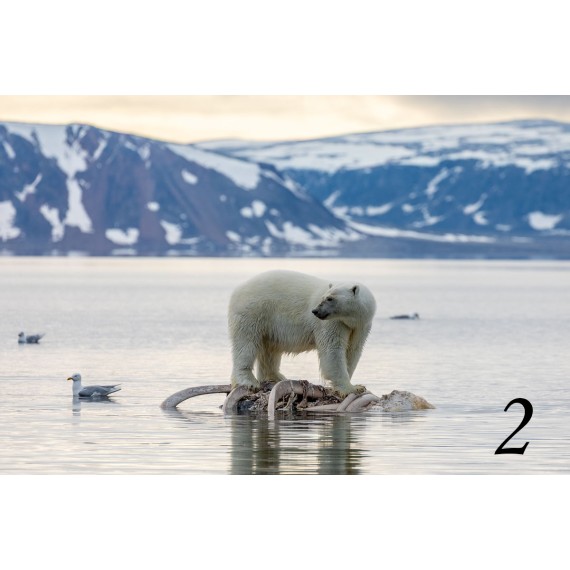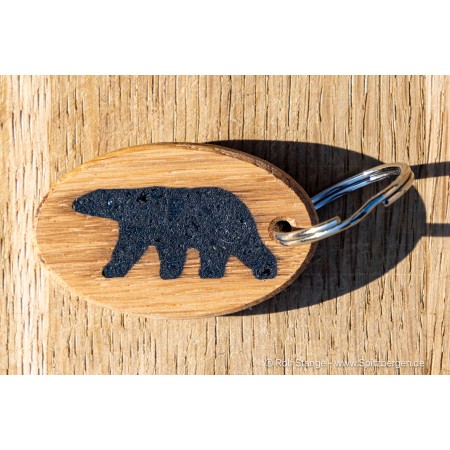Spitsbergen driftwood picture frame
A real piece of Spitsbergen on your wall! Picture frames made from genuine Arctic driftwood, collected on Spitsbergen's beaches and crafted into picture frames in Longyearbyen. Only available in limited quantities!
Shipping will commence in late November/early December 2025, just in time for Christmas.
The driftwood picture frames come with impressive photographs. These are high-quality acrylic prints in 20x30 cm format and mounted in the frame. There are a number of motifs to choose from: Please let me know the number visible on the photos in the comments field during the ordering process or send me an email (contact) so that we can deliver a frame with exactly the motif you want.
Driftwood comes from natural sources or wood that is getting lost for example in arctic forestry. This is the raw material for our Spitsbergen driftwood picture frames (no wood that is of historical value, such as parts of wrecks, as this is protected).
Driftwood has been used as a semi-natural resource for many decades or actually centuries by trappers and others. They used it to heat their huts and sometimes also to build them or anything else they needed.
In the 1970s, there was even a saw mill in Hiorthhamn, opposite of Longyearbyen in Adventfjord, to produce building material from driftwood, but this did not turn out to be economical in the end.
I had carried the idea of picture frames from Spitsbergen driftwood around with me for some time. But the logistics are challenging and it took years from the idea to the first picture frame being made and available.
On my voyages around Spitsbergen I collect suitable pieces of driftwood when the opportunity arises and take them to Longyearbyen. There, they have to be stored for at least a year to dry properly before further processing. This is then done by master carpenter Wolfgang Zach who is living and working in Longyearbyen.
The idea was clearly to preserve the looks and atmosphere of the original driftwood that took the long journey across the Arctic Ocean. Cutting up driftwood may bring a surprise: outside, it appears very much weather-beaten and grey, but once sawn up, it looks actually fresh just like a piece of wood fresh from the building supplies centre. This was obviously not what we were looking for when we started making picture frames from Spitsbergen driftwood!
A long journey, from a forest in Siberia down a river like Lena or Yenisei, across the Arctic Ocean – possibly quite close to the North Pole – to an arctic coast somewhere in Spitsbergen, and from there to the workshop in Longyearbyen and finally to the Spitzbergen.de logistics centre in Germany not far from the Baltic Sea!
We started collecting the first pieces of driftwood in 2014 to experiment with some early designs, and the first 16 frames became available in 2017. They were sold out within a few days, so it was an easy decision to continue with the project and get another collection on the way.
The raw material for all picture frames is exclusively real Spitsbergen-driftwood, which found the way to the workshop in Longyearbyen and to our shipping department in Germany described as above. Collecting young driftwood that does not have any historical value is legal. A license is required for export, which we apply for every year from the Sysselmester.
Scope of delivery
The delivery includes the picture frame complete with a picture as illustrated in the photos. You can easily exchange the picture with another one if you want to by undoing some smal screws (TORX 10).
Size
Sizes may vary slightly: every frame is unique, due to the natural raw material and the manual work involved in the craftsmanship. The back side is polished even, the front shows largely the original surface that was created by sea and ice, wind and weather, gravel and rocks. There is also a narrow stripe of partly polished wood on the front for contrast.
Outside: 40 x 50 cm
Inside (front; space for visible picture): 28,5 x 39 cm
Inside (back; space for frameless picture holder): 30 x 40 cm
The price
The driftwood picture frames come for 179 Euro including VAT if applicable depending on your country and shipping within Germany. Shipping costs apply for shipping to other countries.
Reference FRM-001 – Weight 2.10 kg – Dimensions: 81.00 x 65.00 cm
Wunderschön!!
Der Bilderrahmen, mit der passenden Eisbär-Fotografie auf Acrylglas, ist wunderschön!!
Eine tolle, kreative Idee, eine wunderbare Schreinerarbeit und auch mit einem Zertifikat. Wirklich etwas ganz Besonderes!!
Herr
Wenn man als Norwegenfan einen solchen Bilderrahmen aus Treibholz von Spitzbergen in den Händen hält, geht einem das Herz auf . Wunder schön, toll verarbeitet vom Tischlermeister. Das perfekte Geschenk. Vielen Dank für diese tolle Idee. Liebe Grüße aus Halle

















































 Language: German
Language: German

 Language: dutch
Language: dutch
 Language: English
Language: English






